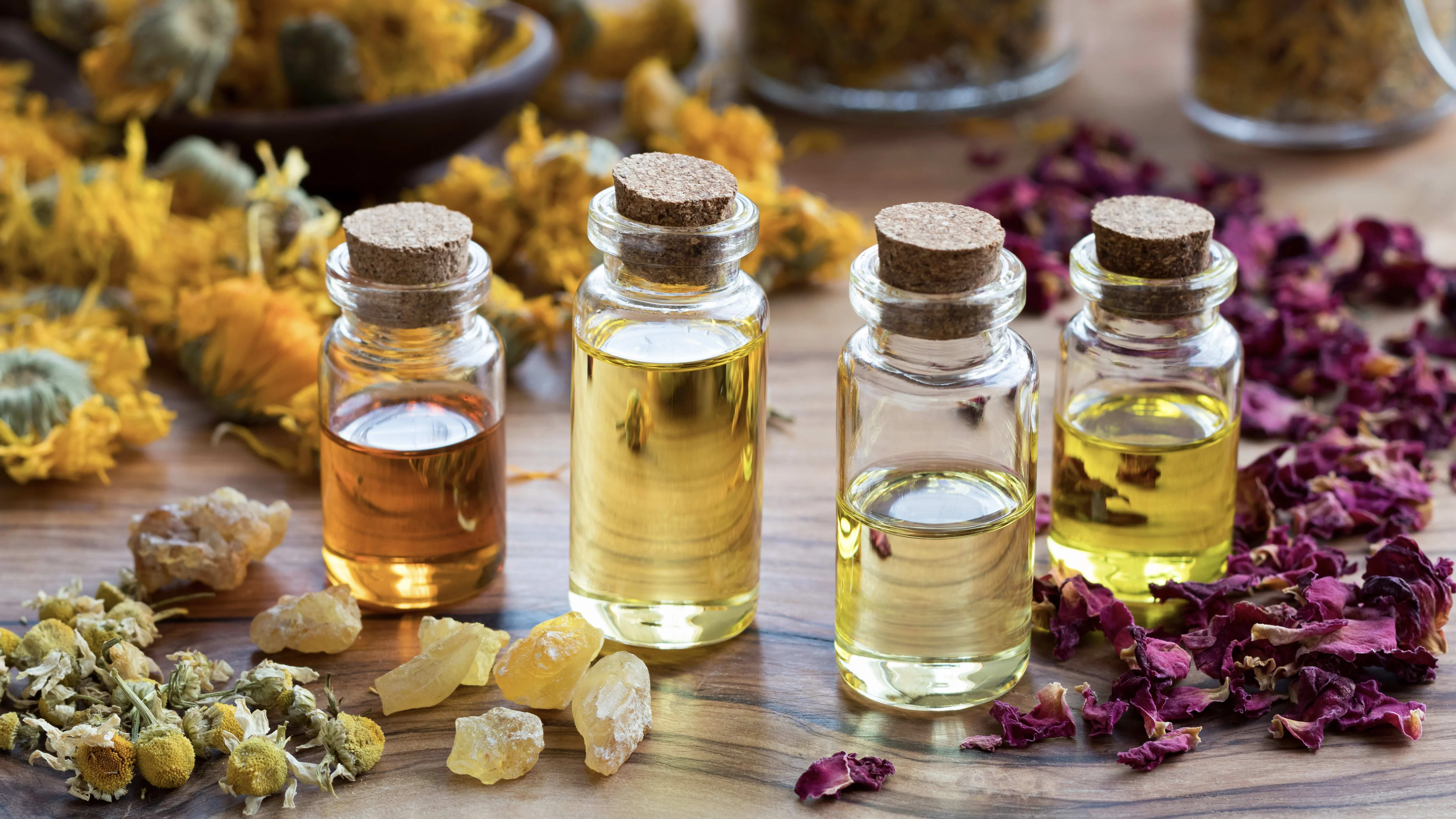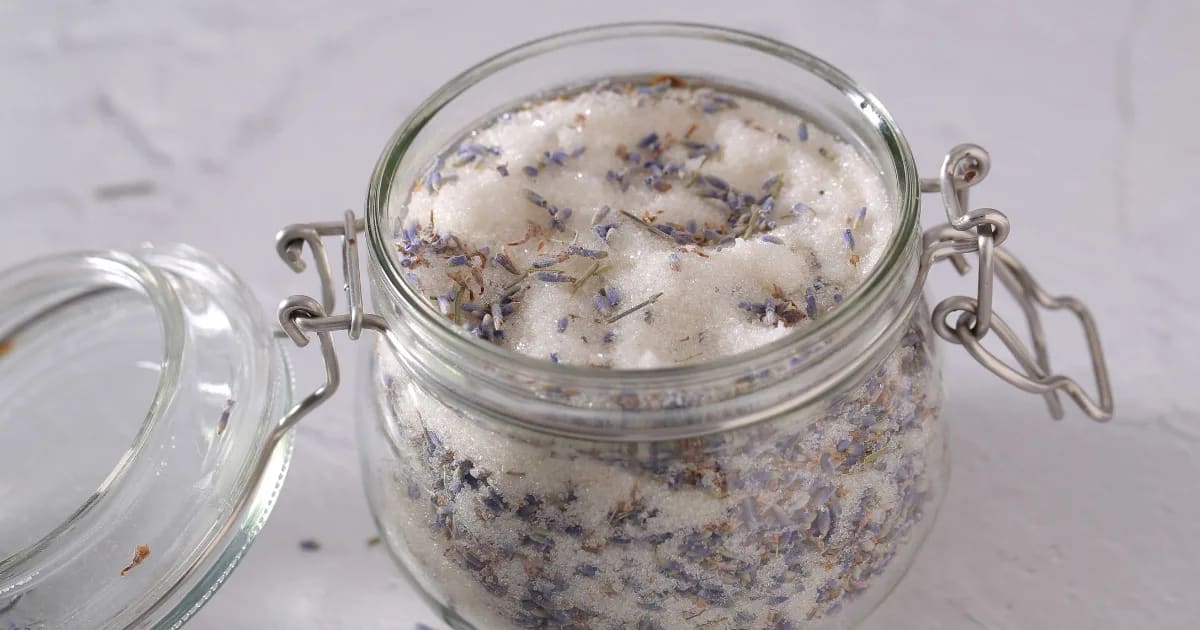Comfrey Hydrosol for Skin: Soothe Cuts, Burns, Bites & More

It’s Easy to See: Comfrey Cares for Our Skin
The first time I saw a Comfrey plant, I was enchanted by its purple bell-like flowers and how the veins in its leaves created a beautiful, lacy pattern. I could see why Comfrey leaves were sometimes compared to the veins and creases in our skin. Perhaps this is what inspired our ancestors to first use Comfrey to heal skin issues like wounds and rashes.
In this post, you’ll learn to use Comfrey hydrosol as a natural remedy to support hurt or irritated skin.
Comfrey (Symphytum officinale) was a staple herb in medieval healing gardens. (Read the Comfrey profile here.) It was used to make a wide variety of soothing ointments and salves.
Comfrey hydrosol is remarkably healing for a wide variety of skin concerns, from small wounds, burns, and rashes to insect bites or stings.
Research continues to find more evidence for Comfrey’s reputation for skin repair! We’ll explore how modern science backs up these timeless folk uses, and then we’ll share a recipe for a Comfrey hydrosol spray for skin restoration.
Comfrey Research for Skin Repair
In my previous post, I explored how Comfrey supports the healing of bones and joints—which is why it’s called “knitbone.”
It also encourages the mending or “reknitting” of the torn muscles around a broken bone, while soothing the pain of the injury.
Comfrey offers this same ability to repair and “reknit” our skin.
Allantoin—one of the main compounds in Comfrey—eases pain and brings broken tissues together. It lays a foundational “matrix” to support new tissue, and promotes the generation of new skin cells.
A 2012 study demonstrated that Comfrey helped control the inflammatory process and stimulate collagen production. Collagen gives our skin structure and strength, and it supports elasticity and helps replace dead skin cells with new ones. By encouraging collagen production, Comfrey lays the foundations for healing and promotes the development of new skin cells.
Comfrey is highly regarded for speeding up healing, and in one study, patients using a 10% Comfrey preparation on their wounds healed 2.97 days faster than a control group.
Blending with Comfrey Hydrosol
Hydrosols are water-based, so if we want to blend Comfrey hydrosol with essential oils, we need an ingredient to help the essential oils to disperse throughout the hydrosol. (Learn about hydrosols here.) I use a product called “Solubol” for this purpose.
Many essential oils can support Comfrey’s skin-healing actions, and a beautifully effectively one is Helichrysum (Helichrysum italicum). It’s another remarkable skin healer—so remarkable that, like Comfrey, I don’t recommend using it for deep wounds or punctures. (I’ll tell you more about this in a moment.)
Yarrow (Achillea millefolium) is a powerfully healing blue oil, rich in chamazulene, that’s been shown to “have anti-inflammatory properties and . . . contribute to faster tissue regeneration.”
Another blue oil I love for skin repair is German Chamomile (Matricaria recutita). German Chamomile (Matricaria recutita) holds a special place in my heart. This blue oil is revered for its gentle, soothing touch that not only nurtures and repairs the skin but also significantly reduces inflammation.
Any of these oils would be trustworthy choices for a variety of skin concerns, from cuts and scrapes to burns and bee stings.
Safety Considerations
Comfrey is traditionally applied topically as a compress or as a spray.
I don’t recommend taking Comfrey hydrosol internally. Comfrey contains allantoin and substances called pyrrolizidine alkaloids—both of which can stress the liver. It’s also not recommended for use during pregnancy.
When using Comfrey hydrosol to care for wounds, be sure to wash the wound thoroughly with soap and water first. It shouldn’t be used for deep wounds, since it might cause the upper layers of skin to heal faster than the deeper part of the wound, creating a pocket where infection might develop.
A Comfrey Recipe
Comfrey hydrosol is so comforting and gentle, you can spritz it directly over wounded skin all by itself.
To elevate Comfrey hydrosol’s healing potential, I am blending it with Helichrysum and Yarrow essential oils. Both these oils are known to encourage quick healing, making this recipe a perfect choice for small, surface skin issues, like cuts, scrapes, bites, rashes, and even bruises (one of Comfrey’s other traditional names is “bruisewort”)!

Comfrey Skin Mending Mist
Nearly 1 fl oz (30 ml) Comfrey hydrosol (Symphytum officinale)
3 ml Solubol (dispersant)
8 drops Helichrysum essential oil (Helichrysum italicum)
10 drops Yarrow essential oil (Achillea millefolium)
Directions Make your blend in a 1 oz glass bottle.
Pour the Solubol into the bottle.
Fill the bottle the rest of the way with Comfrey hydrosol, leaving a little room for the essential oils.
Add the essential oils.
Shake gently.
If the skin is broken, first wash the wound with soap and water. Then mist this blend gently over the area. Use it every few hours as needed.
Mist on burns, bites, stings, rashes or other skin irritations every few hours or as needed.
My Takeaway
Ever since my first encounter with the enchanting purple bell-like flowers of Comfrey and its beautifully veined leaves, I've been deeply drawn to its healing abilities. This remarkable plant demonstrates both strength and gentleness, a duality rooted in ancient traditions and confirmed by modern research. Its profound ability to nurture and mend has made Comfrey an indispensable part of my natural remedy collection. Whether used as a hydrosol alone or enhanced with complementary essential oils, Comfrey offers a gentle yet effective healing touch that I've come to rely on time and again.

Chakras, Emotions, and Essential Oils for Mind-Body Balance
References
Araújo, L. U., Reis, P. G., Barbosa, L. C., Saúde-Guimarães, D. A., Grabe-Guimarães, A., Mosqueira, V. C., Carneiro, C. M., & Silva-Barcellos, N. M. (2012). In vivo wound healing effects of Symphytum officinale L. leaves extract in different topical formulations. Die Pharmazie, 67(4), 355–360.
Barna, M., Kucera, A., Hladícova, M., & Kucera, M. (2007). Der wundheilende Effekt einer Symphytum-Herba-Extrakt-Creme (Symphytum x uplandicum Nyman): Ergebnisse einer randomisierten, kontrollierten Doppelblindstudie [Wound healing effects of a Symphytum herb extract cream (Symphytum x uplandicum NYMAN: ): results of a randomized, controlled double-blind study]. Wiener medizinische Wochenschrift (1946), 157(21-22), 569–574. https://doi.org/10.1007/s10354-007-0474-y
Hajhashemi, M., Ghanbari, Z., Movahedi, M., Rafieian, M., Keivani, A., & Haghollahi, F. (2018). The effect of Achillea millefolium and Hypericum perforatum ointments on episiotomy wound healing in primiparous women. The Journal of Maternal-Fetal & Neonatal Medicine, 31(1), 63-69.
Medellin-Luna, M. F., Castaneda-Delgado, J. E., Martínez-Balderas, V. Y., & Cervantes-Villagrana, A. R. (2019). Medicinal plant extracts and their use as wound closure inducing agents. Journal of medicinal food, 22(5), 435-443.
Staiger C. (2012). Comfrey: a clinical overview. Phytotherapy research : PTR, 26(10), 1441–1448. https://doi.org/10.1002/ptr.4612





